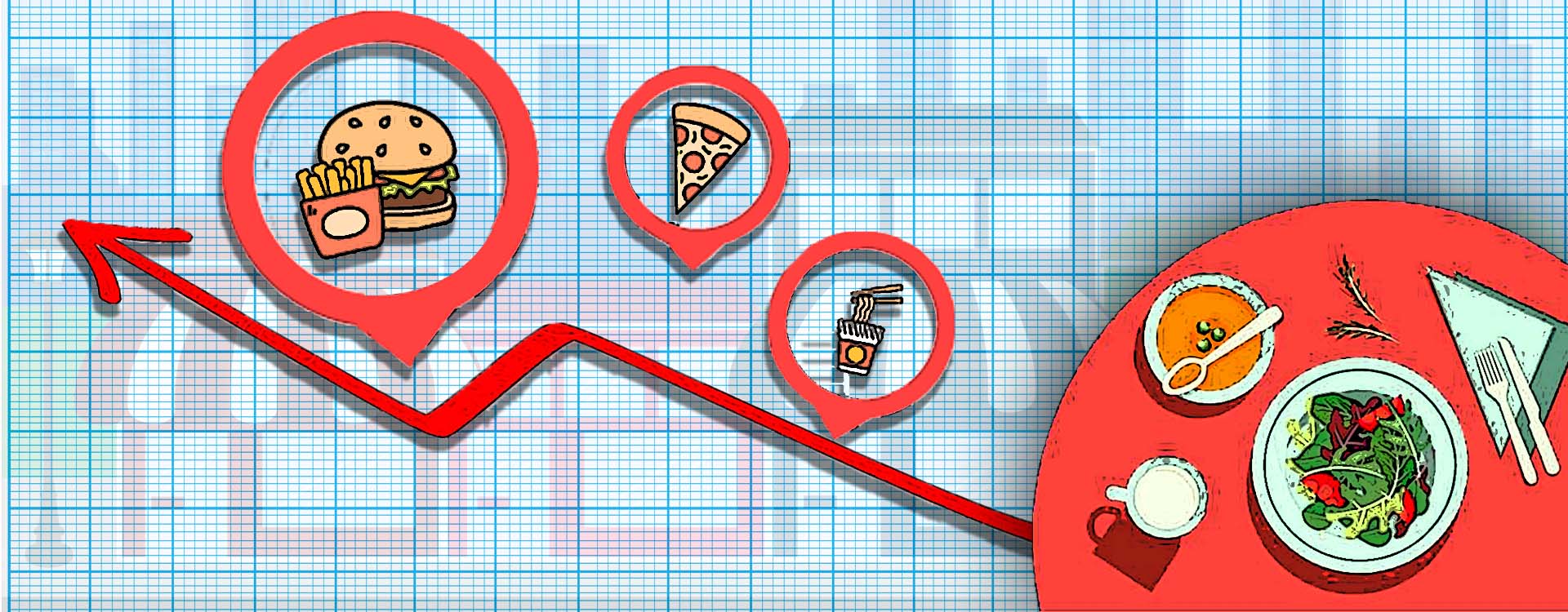Customer experience is pivotal in the restaurant business. 2020 has been a turning point for restaurants and food services with the emerging need for contactless dining and food delivery, safe distancing, and more concentrated hygiene practises.
Among the industries that took a hit due to the pandemic, Restaurants and Food Services were impacted with several food chains being forced to shut down. The two biggest trends that ruled 2020 in restaurants and food services were contactless dining/ordering and payments.
Smart restaurants innovated to stay afloat during the trying times. We saw DIY meal delivery kits, food delivered to customer homes in limousines. Restaurants also rolled out free and paid virtual cooking classes to divert their chefs’ skills and expertise to a new avenue online.
‘‘
The two biggest trends that ruled 2020 in restaurants and food services were contactless dining/ordering and payments.
Cloud Kitchens – Industry Trend
The trend that has gripped Restaurants and Food Service chains in 2021 are Cloud Kitchens. Cloud Kitchens are an initiative aimed at food delivery services. As the term rightly suggests, it’s just a kitchen space with no opportunities for customers to dine in. This trend for the restaurant industry involves a business structure minus overhead costs, staff salaries, and is driven by an online presence.
Cloud kitchens are being run by restaurateurs through leasing of shared commercial kitchen space in top-tier cities where property lease prices are through the roof.
An example for this is ‘Goila Butter Chicken’, a Mumbai-based food pop-up start-up which sold a portion of its equity stake to ‘Ghost Kitchens’. Ghost Kitchens is another Indian start-up which is a ‘Cloud Kitchen Fund’ and India’s very first Investment and Incubation firm for Indian start-ups in the cloud kitchen sector.
The two start-ups planned to roll out a national and international wide cloud kitchen chain. This goes to show that virtual kitchens are a viable financial model for restaurant chains to turn to in 2021.
Key Food Services Industry Forecasts
The first forecast will be the emergence of limited-service restaurants providing off-premise services.
In terms of consumer spending habits, it will be reduced to a conservative scale and will see no rise, remaining constant at least until the end of this year.
The next forecast which is actually a breather for the restaurants and food services sector is the fact that demand for restaurant grade food and food delivery services has not diminished. Consumers only choose to avoid in-house dining due to safety and hygiene concerns. This demand can easily be redirected by start-ups by offering curbside pickup and delivery services.
What’s in it for me?
The restaurants and food services sector has undergone a transformation owing to the pandemic. Start-ups venturing into this industry must adhere to the trends brought about by this transformation to stay a step ahead.
Although the industry has suffered a shut down last year, it has reopened with major changes. You can look into ‘Dineout services’ as a start-up since this concept is in line with what consumers are expecting.
The next plan of action is to adopt digital operations right from the menu to the payments, as well feedback. As a digital-ready Food & Beverages (FnB) start-up, consumers will place their trust instantly.
The last plan of action is to incorporate more sustainable food choices like Vegan, health-conscious dishes with sustainably sourced ingredients and produce. These are great marketing pitch points which will attract consumers.




